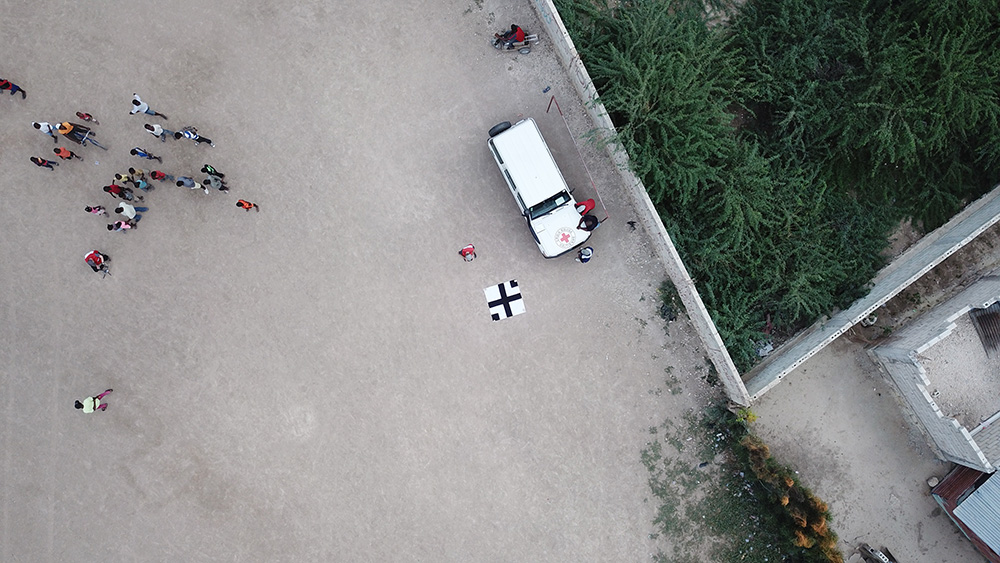Aid from the Air: A review of drone use in the RCRC global network¶
The initial research was conducted September 2019 to February 2020 by Faine Greenwood and Dan Joseph. The information here will be updated as more details become available. You can read online, or download a PDF of the report.

Fig. 1 The view from a drone taking off to map in Canaan, Haiti. | Credit: Dan Joseph, American Red Cross.¶
- Introduction
- Background
- Summary of findings
- Timeline of drone use
- Drone activities in the network
- American Red Cross
- Australian Red Cross
- Austrian Red Cross
- Belize Red Cross Society
- Brazilian Red Cross
- The Canadian Red Cross Society
- Colombian Red Cross Society
- Ecuadorian Red Cross
- Fiji Red Cross Society
- German Red Cross
- Indonesian Red Cross Society
- International Committee of the Red Cross (ICRC)
- Italian Red Cross
- Kenya Red Cross Society
- Korean Red Cross
- Lesotho Red Cross Society
- Malawi Red Cross Society
- Mexican Red Cross
- The Netherlands Red Cross
- New Zealand Red Cross
- Philippine Red Cross
- Salvadorean Red Cross Society
- Senegalese Red Cross Society
- Spanish Red Cross
- The Sri Lanka Red Cross Society
- Tanzania Red Cross National Society
- The Uganda Red Cross Society
- Benefits and costs of drone use for disaster response
- The benefits
- The challenges
- Regulatory restrictions
- Lack of clarity around how drone data influences decision-making
- Lack of institutional buy-in or support
- Cost of acquiring drones or hiring drone services
- Technical expertise and availability of trained personnel
- Technical and environmental constraints
- Bad reputation of drone technology
- Concern around data privacy and security
- What should happen next?
- Connecting Red Cross Red Crescent drone users
- Creating trainings and materials
- Promotion of open source technologies for drone operations
- Developing organizational standards for drone use
- Supporting further research into humanitarian drone use
- Sharing airspace (and information) safely
- Developing drone logistics
- Developing methodologies for effective data use
- Supporting development of humanitarian-friendly drone regulations
- Conclusion
- About the Authors
- Methods